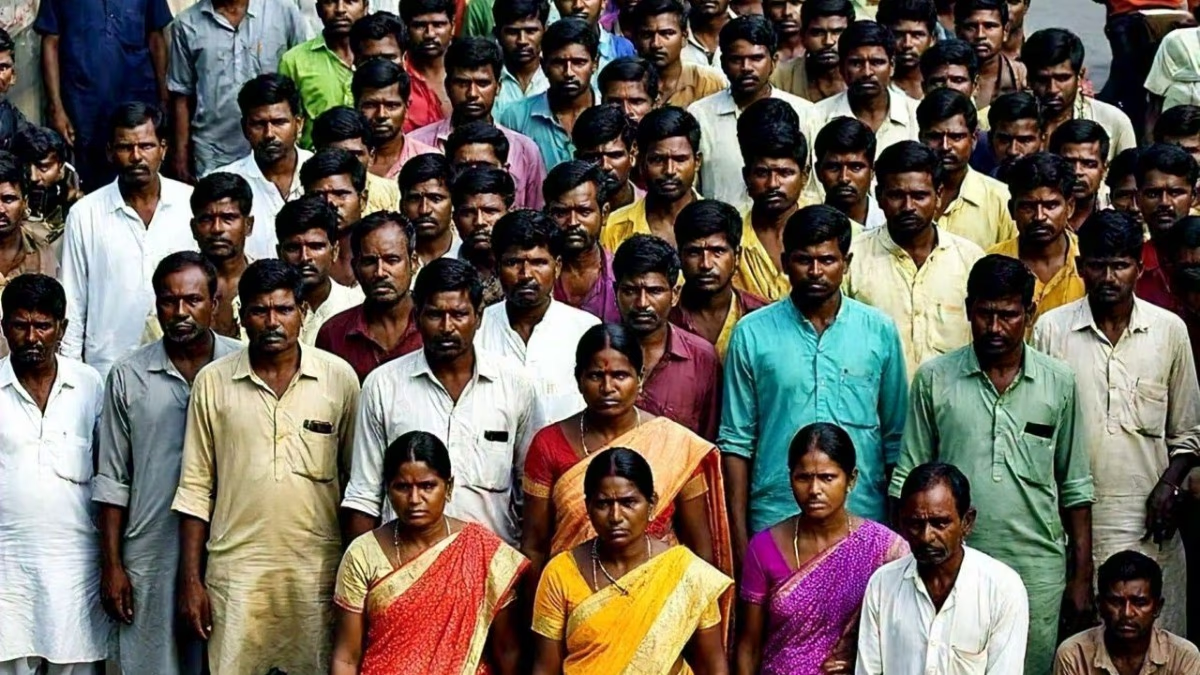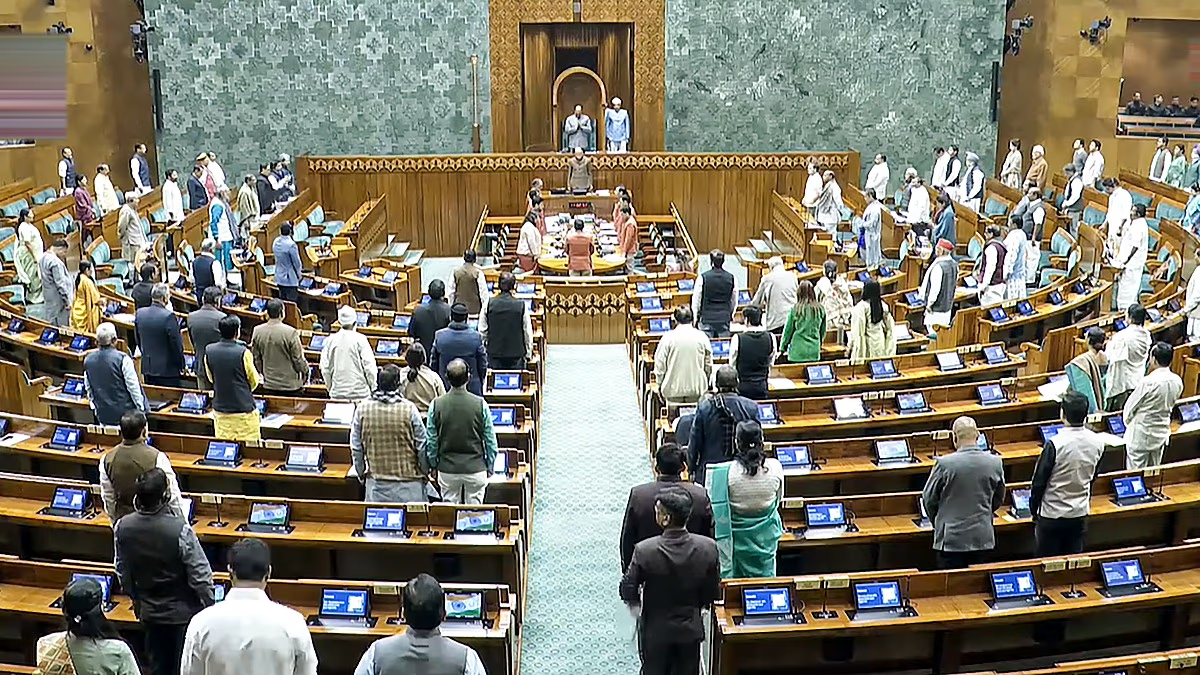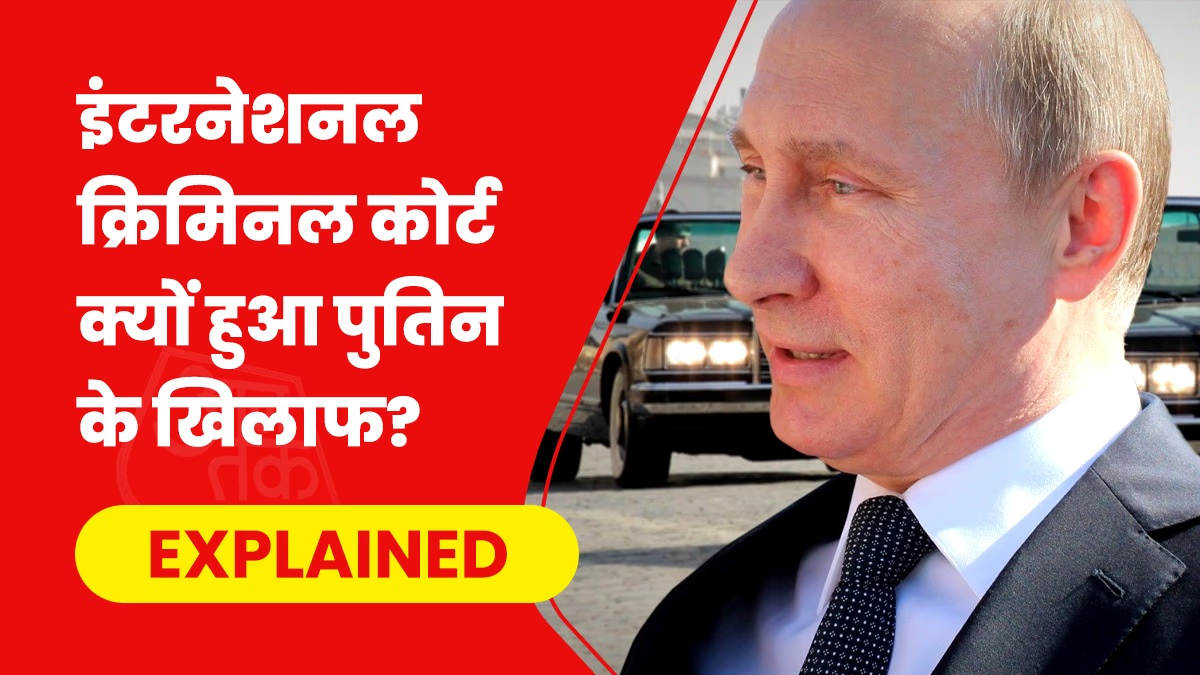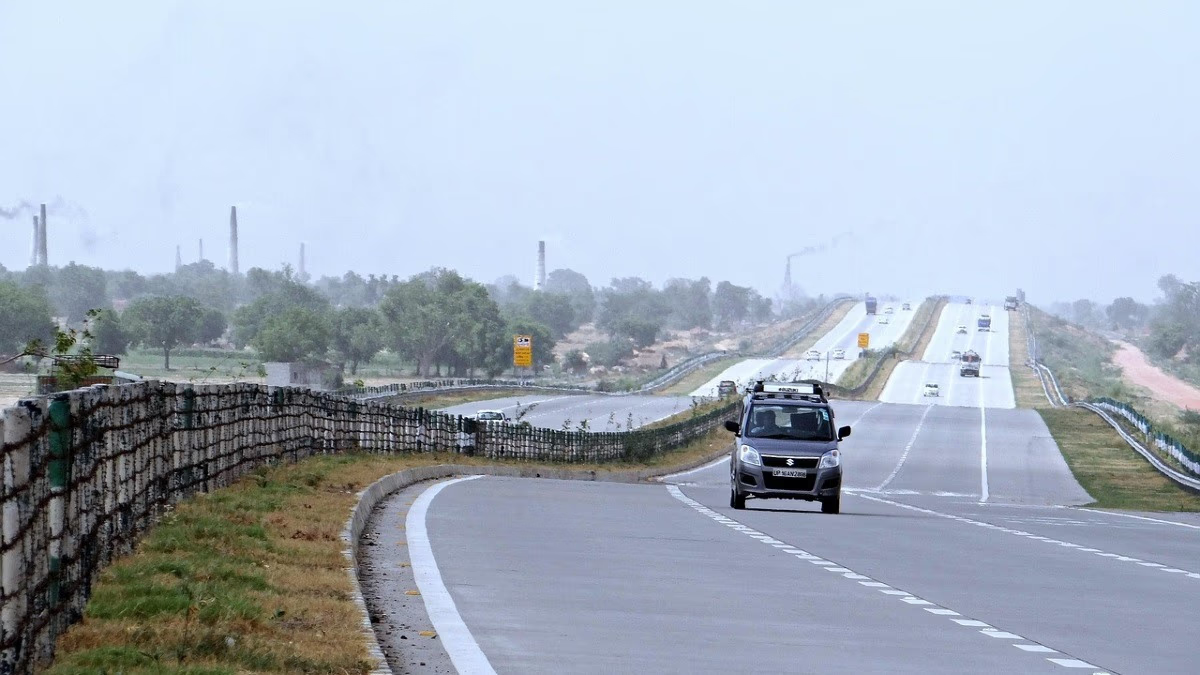RSS Chief Mohan Bhagwat expressed concern over the declining population as a societal issue. At a recent event, Bhagwat suggested that a woman should have at least three children in her lifetime. He mentioned that a society's existence fades if the fertility rate falls below 2.1.
Bhagwat cited disappearing languages and cultures to stress the importance of maintaining a fertility rate above 2.1, warning that dropping below this threshold heightens the risk of societal extinction.
He noted that the national population policy, set in either 1998 or 2002, clearly stated that the fertility rate shouldn't fall below 2.1. Hence, he urged each couple to have at least three children.
According to the National Family Health Survey (NFHS-5), India's total fertility rate decreased from 2.2 to 2.0. The total fertility rate reflects the number of children a woman is likely or expected to have in her lifetime. United Nations documents suggest the fertility rate should be 2.1 to ensure generational growth.
During the initial survey conducted in 1990-92, the nation's fertility rate was 3.4, meaning women averaged over three children. However, a steady decline has followed.
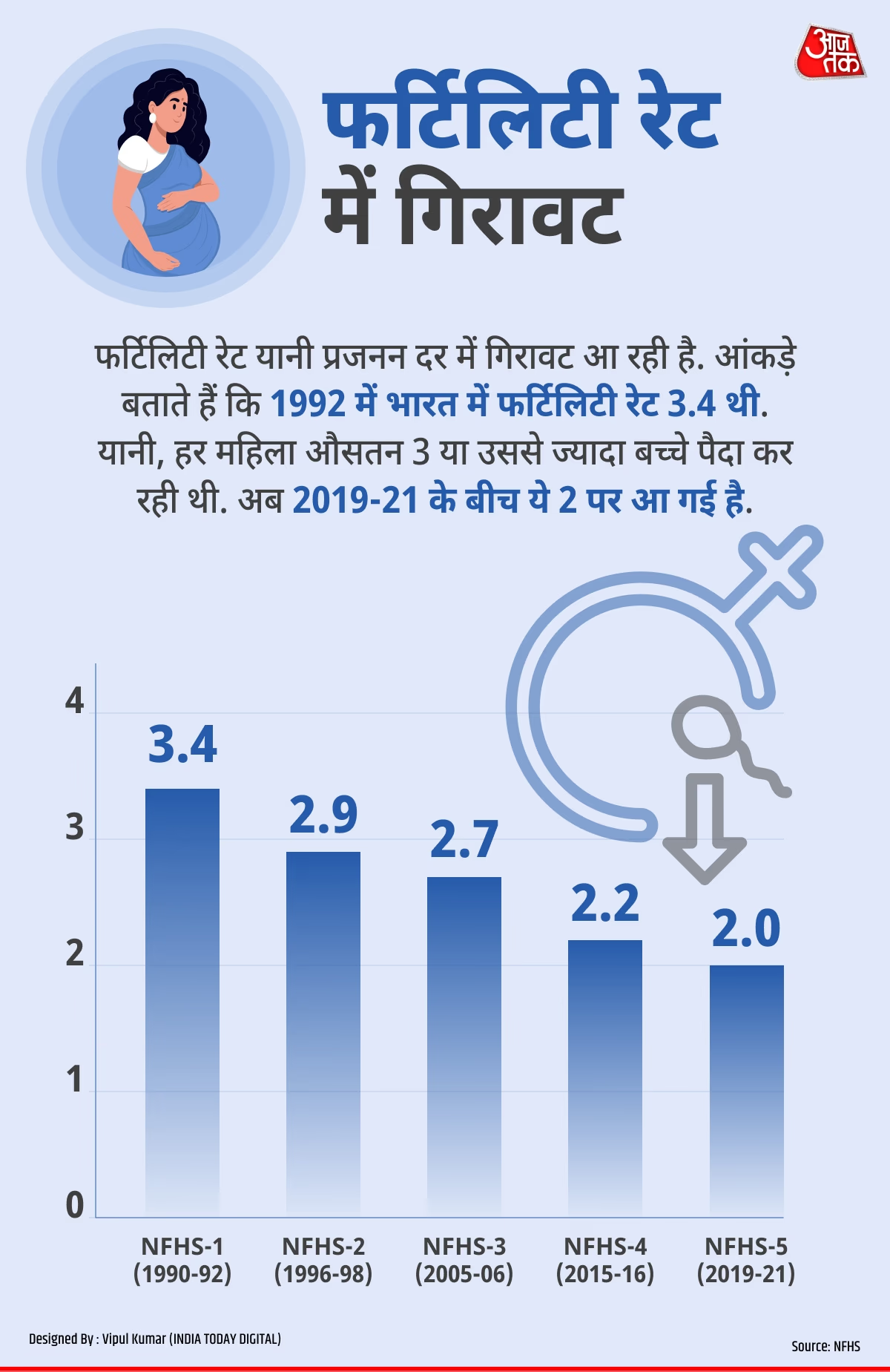
Source: aajtak
The decreasing fertility rate leads to an aging population. Last year, the United Nations released the 'India Aging Report 2023,' predicting a 20.8% elderly population by 2050.
Elderly individuals, aged 60 or above, have risen rapidly post-2010, reportedly diminishing the proportion of the under-15 demographic.
The report projected 149 million elderly by July 2022, accounting for 10.5% of the population, with numbers expected to surge to 347 million, or 20.8% by 2050. By century's end, over 36% of India's populace will be elderly.
Estimates from the report indicated an 18% population growth from 2022 to 2050, while the elderly population could increase by 134%. For those over 80, a 279% increase is predicted.
The policy commission's report states that in the 1950s, Indian women averaged six children. By 2000, this rate fell to 3.4. The NFHS-5 survey from 2019-21 revealed the fertility rate has now reached two, meaning Indian women currently average two children. By 2050, this is expected to drop to 1.7.
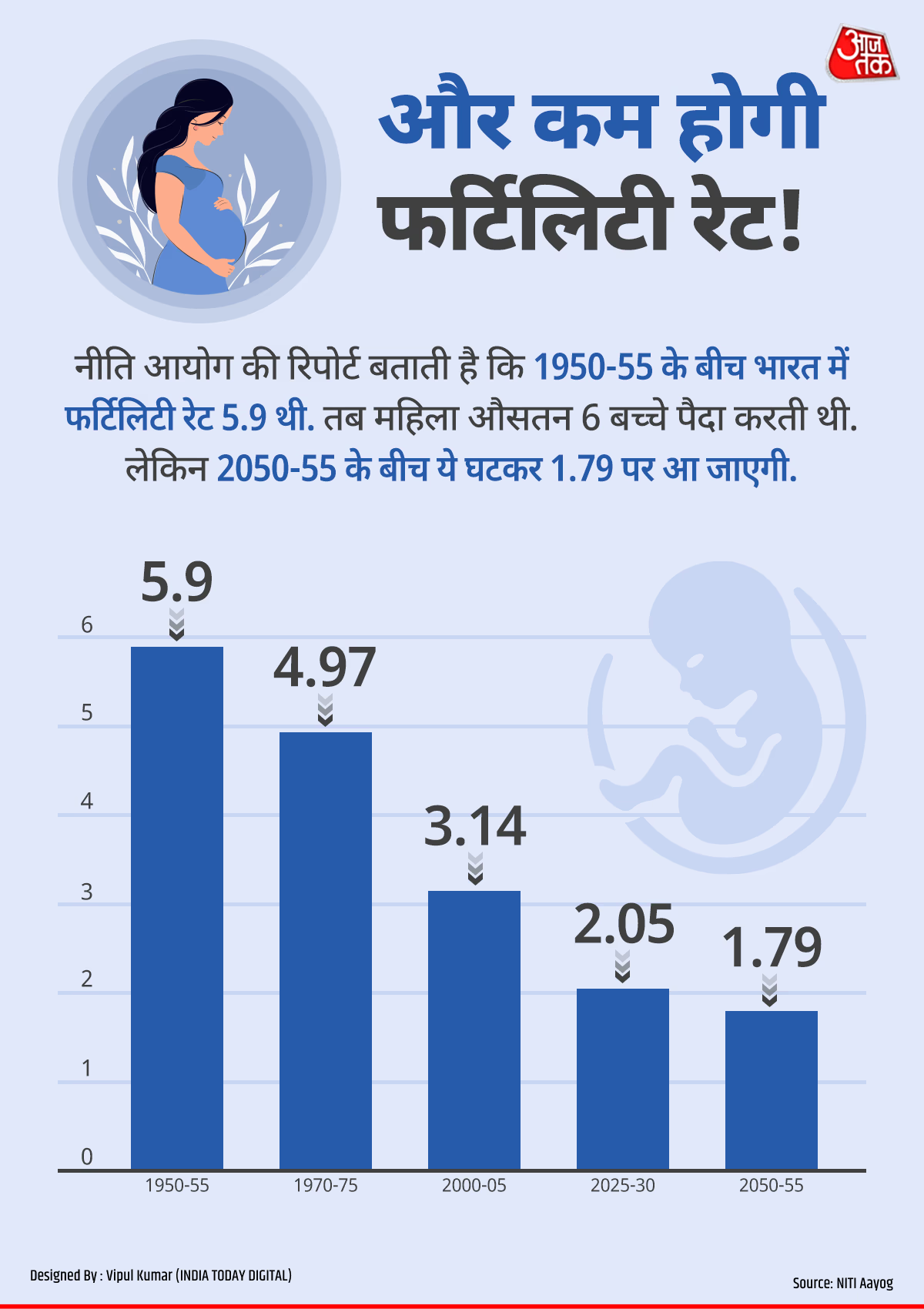
Source: aajtak
There is a strong push for more children, yet most women prefer fewer. According to NFHS-5, the fertility rate is 2.0, but women ideally desire 1.6.
The survey found that 86% of those with two children, regardless of gender, don't wish for a third. Contrary to popular belief, this desire for smaller families transcends education levels. Women who never attended school have a fertility rate of 2.8 but aim for 2.2.
Boys are often preferred over girls in Indian society, prompting more childbirths. According to the survey, 35% of childless women desire a third child. Conversely, only 9% of women with two sons wish for another child.
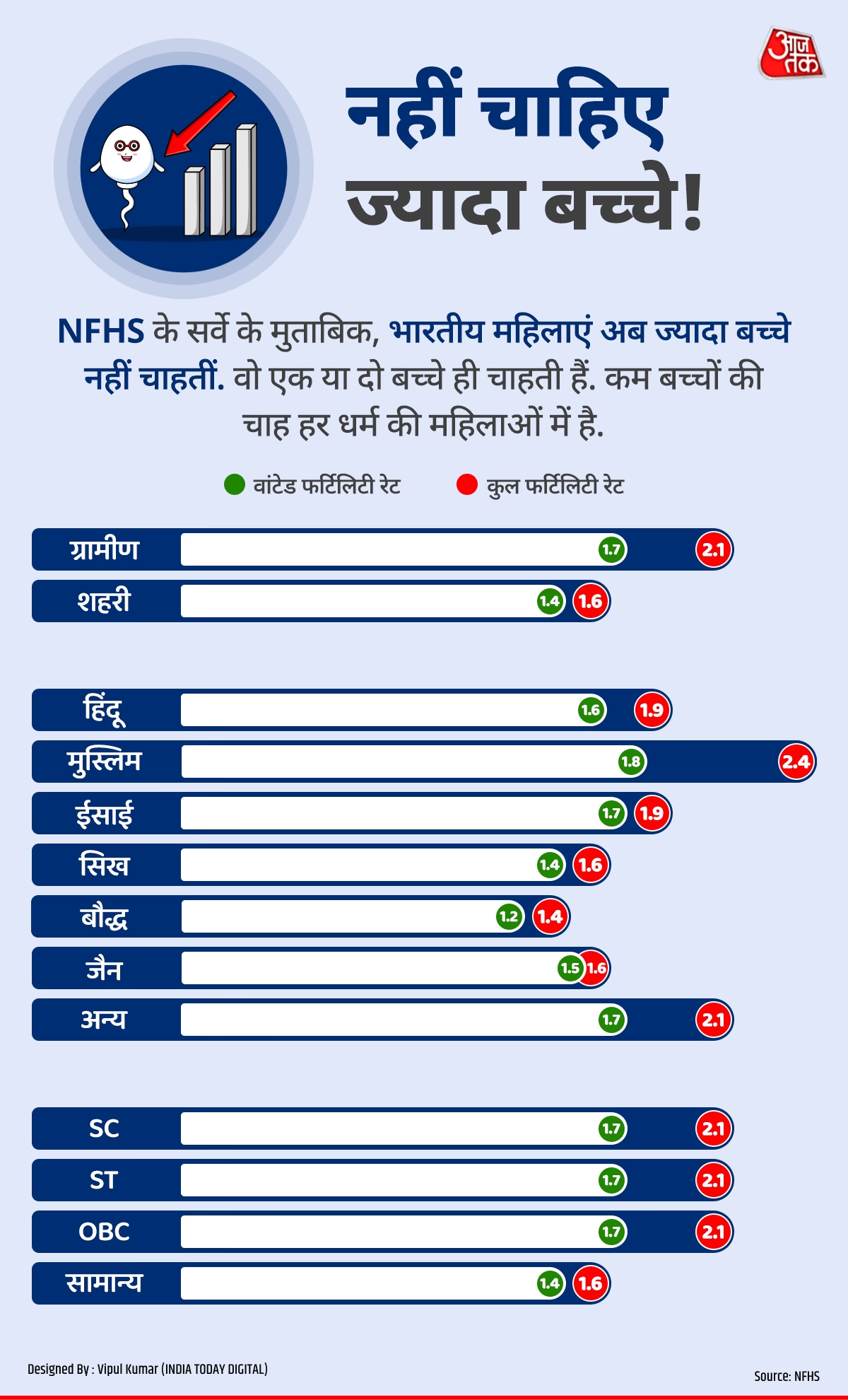
Source: aajtak
Population continues to surge
The last census in 2011 recorded India's population at over 1.21 billion, a 17.7% increase from 2001's population of 1.02 billion.
Population growth rates have consistently declined over the decades. The highest surge of 25% was recorded between 1961 and 1971. India's current estimated population stands around 1.4 billion; compared to 2011, it reflects a 16% increase.
Why is the population swelling despite declining fertility rates? The answer lies in the youth demographic. The ‘Youth in India 2022’ report highlights that, by 2021, 27% of India’s population was aged 15-29, and 37% was aged 30-59. The United Nations indicates that this young generation is propelling population growth. India’s population is projected to peak at 1.67 billion by 2063 before declining due to reduced fertility rates and a shrinking young demographic.
